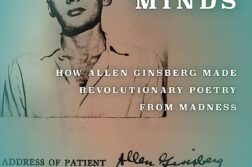IN 1949, more than five years before writing his landmark poem “Howl,” a 23-year-old Allen Ginsberg was for eight months a patient at the New York State Psychiatric Institute (PI), where he got some much-needed help in the form of psychotherapy. From this hospitalization he took experiences and insights that would eventually find their way into “Howl,” and through this and other revolutionary poems, he helped to humanize both madness and psychiatry.
Ginsberg’s admission to the hospital had followed a scandalous car crash and arrest that made The New York Times. The alternative could have been a stint at Rikers, but a supportive letter from cultural historian Jacques Barzun, one of his Columbia professors, and a deal with the prosecutor sent him to PI instead. At the time, he had been having visions, and there was concern that he was becoming psychotic, like his mother, who had been in and out of psychiatric hospitals and diagnosed with schizophrenia.
At PI, Ginsberg’s behavior came under the scrutiny of the psychiatric practices of the day. On several occasions, he said that his main problem was his homosexuality, which he hoped to change. His sexual orientation was regarded in part as homosexuality and in part as a symptom of “pan-sexuality,” the sexual attraction to a person of any sex or gender. According to the diagnosis of “pseudo-neurotic type schizophrenia,” which Ginsberg had been assigned by his doctors, pan-sexuality was one of a number of defense mechanisms guarding against an underlying psychosis, which he had probably inherited from his mother Naomi. The psychiatrists urged him to give up such behavior and to try being with women, though they didn’t push too hard for fear that he might spiral further into psychosis. He partially complied, saying he would have a threesome with a male friend and a woman as a way to transfer his intimacy from him to her.
Stevan Weine is the author of Best Minds: How Allen Ginsberg Made Revolutionary Poetry from Madness (Fordham, 2023).






